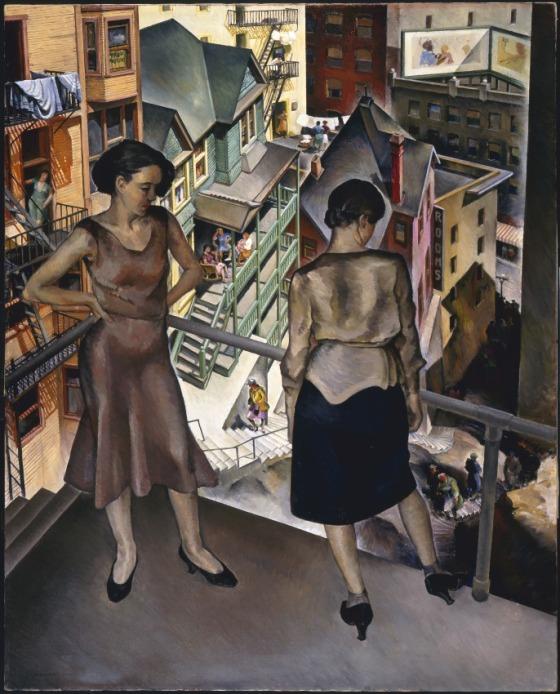In the early 1900s, downtown Los Angeles was outfitted with a system of streetcars that connected surrounding neighborhoods such as Echo Park, Westlake, West Adams, and Boyle Heights, among other regions. Known as the Los Angeles Railway, the service began in 1901 and ended in 1963, when numerous oil and automobile companies—organized under a holding company called National City Lines, Inc.—bought up the rail lines in order to dismantle them to make way for the automobile.
Angel's Flight, one of the original funiculars that were part of Los Angeles Railway, connected Hill Street (under Bunker Hill) to Olive Street (above Bunker Hill), taking pedestrians up to an observation tower at the top of the line. Millard Sheets, a painter known for his cityscapes, created this scene of Angel's Flight from atop the hill, showing the steep terrain of downtown and the inhabitants who called it home. The two young women in the foreground—most likely modeled after Sheets's wife—look down the cavernous space under them to see a meandering staircase, rooftops, and neighborhood dwellers enjoying nestled spaces throughout the scene. Each building is represented from a different perspective, and the light appears to come in at different angles. These strategies, along with the play on light and shadow and the use of vivid colors, give the scene a dynamic feeling reminscent of the present-day rebirth of downtown L.A.
Angel's Flight is currently on view on the third floor of the Art of the Americas Building. Check out LACMA's Collections Online to learn more about this painting.
This year marks LACMA's 50th anniversary. We're celebrating all that we've done while looking forward to what's in store for us in the next 50. Check back every week on Unframed to find a highlight of an artwork from LACMA's collection, which features over 120,000 objects that span time, the globe, and all cultures. This is 23/50 of the series.



